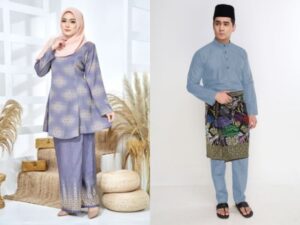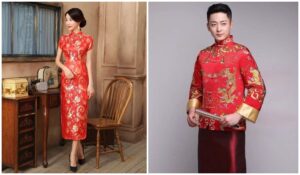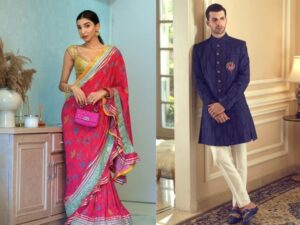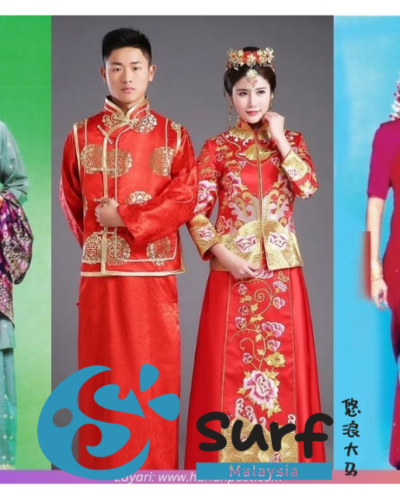Malaysia’s major ethnic groups are Malay, Chinese, and Indian, each of which has distinctive traditional attire. The majority of the time, people only dress traditionally in Malaysia for special occasions. Malaysia’s multiethnic traditional clothing is all multicolored, uniquely representative of their culture, and exudes vitality. Pakaian is the term for clothing in Malaysia’s national language.
Malay

Men: The baju melayu, or traditional Malay clothing, consists of a loose tunic worn with pants and a sarong known as a sampin. Along with it, men don the traditional headgear known as a songkok or kopiah. Some men choose to pair their batik shirts with pants.
Women: Sarongs tied over the chest were part of the traditional Malay attire known as kemban. Women now wear baju kurung, a traditional outfit that consists of a long skirt known as kain and a knee-length, full-sleeved shirt. One side of the skirt is pleated. Typically, this clothing is worn with a scarf around the head. The two-piece, skin-fitting kebaya costume is a semi-formal interpretation.
Chinese

Men: Chinese males in Malaysia do not often wear the tang suit, which is their traditional attire. A tang suit is a style of jacket that is typically flowery, has a collar, and ties at the belly. Chinese immigrants abroad gave it the Tang empire as its name.
Women: Cheongsam, which translates to “long dress,” is worn by Chinese ladies in Malaysia for ceremonial occasions and festivals. A silk one-piece dress with a collar and side or center waist clasps is known as a cheongsam, often known as a qipao. Samfoo, a style of ankle-length pants with a loose, fitted top that clasps in the middle, is the attire worn by older women.
Indian

Men: Indian guys typically dress in dhoti garments. The dhoti is a lengthy, unstitched garment that is often five yards long. The clothes are fastened with a knot at the waist and ankles. In eastern India, the term “dhoti kurta” refers to the pairing of the dhoti and kurta. In the south, the dhoti is also worn with an angavastram. The ensemble has become a sophisticated cultural emblem throughout time and is recognized as appropriate for both official and informal settings.
Women: The saree is one of the most iconic and versatile garments worn by Indian women across the country. It is a long piece of cloth, usually around 5 to 9 meters in length, draped elegantly around the body. The saree is typically wrapped around the waist, with one end draped over the shoulder, baring the midriff or covering it, depending on regional styles. It is paired with a blouse that varies in design, sleeve length, and style.



















No comment